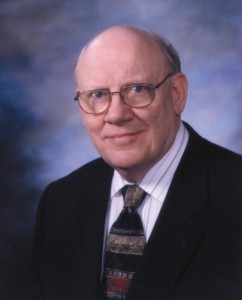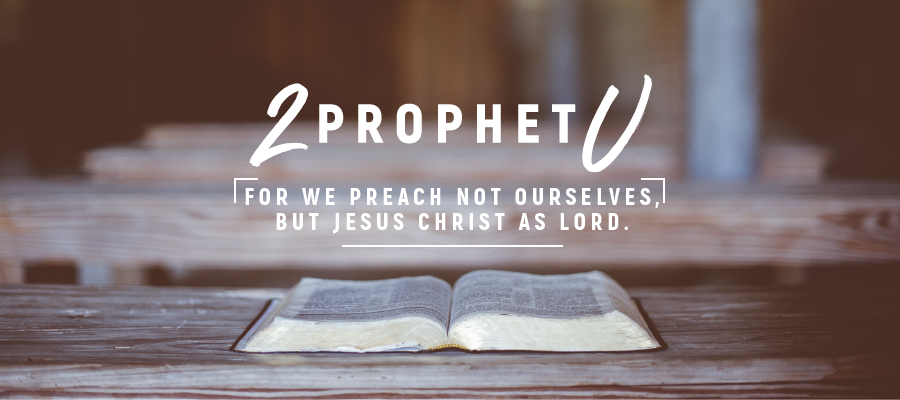Let Us Begin
I have no statistical proof, but I believe that at least 50 percent of the sermons preached last Sunday started with- “Now, if you have your Bibles, please turn to. . . .” The other 50 percent began with “Now, you’ll remember that last week we discussed. . . .”
Of course, many preachers feel that this is the best way to start each sermon. After all, these statements are familiar, so nobody has to pay attention. And they give the people opportunity to put down the hymnal (or the baby), pick up the Bible and locate the text. It also gives the minister time to get his notes together and his brain settled in the pulpit, especially if he’s the kind who needs to rev up the motors before he can take off.
But even these advantages don’t make this kind of introduction the best way to start a sermon. If the sermon text is in the worship folder (“bulletin” to the nonliturgical), the congregation can be prepared when the sermon starts: Bibles open, eyes on the preacher, ears and hearts open to God’s truth. The minister ought to be ready to preach the moment he gets behind the pulpit, so why waste time on a pointless opening statement? If he needs to get things together, let him pause for a brief prayer.
Why an introduction anyway? The older books on homiletics described many types of introductions and explained when to use them. They gave us numerous reasons why our sermons needed introductions: to set the atmosphere, to announce the theme, to give the context of the Bible text, to break down barriers and so on.
But in this age of fast-food, digests and “get away vacations,” we had better think twice before we plan a long introduction for the message, at least as far as our regular church congregation is concerned. They know us, they are there to listen to us, and they don’t want to be kept on the runway. Let’s take off!
The main purpose of the sermon introduction is to tell them what we are preaching about and why they need to listen. Content and intent– that’s what introductions are all about.
Both factors are important, and both must be given concisely. A long, rambling introduction, with numerous flashbacks to previous sermons, will only confuse the visitors, bore the regulars and encourage both groups to turn us off until something really interesting starts to happen.
The worshiper is asking us two questions: “What are you preaching about?” and “Why should I listen?” The sooner we answer, the better off all of us will be.
Wanted: Precision
If doctors were as vague in their prescriptions as some preachers are in their theme statements, most of us would be dead. Determining that “propositional statement,” and fine-tuning it to say precisely what ought to be said, challenges even the most seasoned preacher of the Word.
When you read the sermons of the “greats” of the past, you notice that most of them have long introductions. (In fact, the farther back you go, the longer they get!) But you must remember that their people had nothing exciting to do at home, and they expected the “pulpit discourse” to be long and heavy. Not so today. People want us to get to the point as soon as possible. For example:
“People don’t really believe the story of the Prodigal Son these days. Most of the prodigals we know, or we hear about in the news, never seem to get into trouble. Instead of ending up in the pigpen, they seem to end up on top of the world! How do you explain this? If it doesn’t pay to be good, why be good?”
Or: “All of us know that we should pray. Prayer is important to the Christian, to the Christian home, and to the church. Why is prayer so difficult for us? What can we do to make prayer really a vital part of our lives?”
Either of these introductions will get the listeners’ attention, tell them why they should listen and lead right into a sermon statement.
If the context of a passage is important to the message, then work it in early in the first point; but try to keep the introduction from becoming a survey of Bible history or a review of your last three sermons. To keep from digressing, write out the introduction and stick to it. When an introduction grows long and complicated, it’s usually a sign that something is wrong with the sermon statement (proposition) or that we are attempting to cover too much ground. Sharpen the focus of the message and your troubles will end.
Something arresting and convincing happens when a pastor steps into the pulpit and immediately starts to preach. In Bible conference ministry, I have noticed that many speakers who “stroll into” their messages lose the congregation after a few minutes. If the listeners are in earnest to hear, we ought to be in earnest to preach.
This is not to suggest that the introduction be so abrupt that it catches people by surprise and leaves them behind. Lyman Abbott said in his Yale Lectures, “As to introductions, generally the less introduction the better. . . . He who strikes the heart of his subject in the first sentence is the one most likely to secure an attentive listening at the outset of his discourse.”
Yes, some occasions will call for a different approach; and wise is the pastor who knows his occasions.
©2002 WWW Used by permission. This article is copyrighted by the author and is for your individual use. Reproduction for any other purpose is governed by copyright laws and is strictly prohibited. This material originally appeared in Prokope, May-June 1988.

Dr. Warren Wiersbe (1929-2019) was an internationally known Bible teacher, author, and conference speaker. He graduated in 1953 from Northern Baptist Theological Seminary in Lombard, Illinois. While attending seminary, he was ordained as pastor of Central Baptist Church in 1951 and served until 1957. From September 1957 to 1961, Wiersbe served as Director of The Literature Division for Youth for Christ International. From 1961 to 1971 he pastored Calvary Baptist Church of Covington, Kentucky south of Cincinnati, Ohio. His sermons were broadcast as the “Calvary Hour” on a local Cincinnati radio station. From 1971 to 1978, He served as the pastor of Moody Church in Chicago 1971 to 1978. While at Moody Church he continued in radio ministry. Between August 1979 and March 1982, he wrote bi-weekly for Christianity Today as “Eutychus X”, taught practical theology classes at Trinity Evangelical Divinity School in Deerfield, Illinois, and wrote the course material and taught a Doctor of Ministry course at Trinity and Dallas Seminary. In 1980 he transitioned to Back to the Bible radio broadcasting network where he worked until 1990. Dr. Wiersbe became Writer in Residence at Cornerstone University in Grand Rapids and Distinguished Professor of Preaching at Grand Rapids Theological Seminary. In his lifetime, Dr. Wiersbe wrote over 170 books—including the popular Be series, which has sold over four million copies. Dr. Wiersbe was awarded the Gold Medallion Lifetime Achievement by the Evangelical Christian Publishers Association (ECPA).
 Warren Wiersbe Podcast
Warren Wiersbe Podcast
- An error has occurred, which probably means the feed is down. Try again later.
 Sherwood Baptist Podcast
Sherwood Baptist Podcast
- An error has occurred, which probably means the feed is down. Try again later.

Leave a Reply